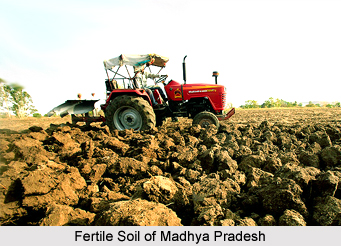 Climate of Madhya Pradesh includes three main seasons like in the other states of India but the duration varies. Winters and rainy seasons are very short, while summers are comparatively long. The Tropic of Cancer passes through the middle of Madhya Pradesh. Thus, along with the shifting of the sun towards the northern Hemisphere and the Southern Hemisphere, climatic conditions change on a large scale. The impact of the Great Himalayas takes place extensively throughout Madhya Pradesh particularly during the winters. At the same time, Tropic of Cancer also has a great influence on the climatic conditions of the state.
Climate of Madhya Pradesh includes three main seasons like in the other states of India but the duration varies. Winters and rainy seasons are very short, while summers are comparatively long. The Tropic of Cancer passes through the middle of Madhya Pradesh. Thus, along with the shifting of the sun towards the northern Hemisphere and the Southern Hemisphere, climatic conditions change on a large scale. The impact of the Great Himalayas takes place extensively throughout Madhya Pradesh particularly during the winters. At the same time, Tropic of Cancer also has a great influence on the climatic conditions of the state.
The summers start around middle of February and end in July where the first outbreak of monsoon takes place. During the summer season, the temperature reaches more than 45 degree Celsius. The southern part of Madhya Pradesh (south of Tropic of Cancer) receives much solar energy in which Khandawa, Khargone, Ujjain, etc. are the hottest places. North Gwalior receives large amount of solar energy and it is the hottest place of the northern part of the state. Morena district, Gwalior, and Datia receives around 42.5 degree Celsius isotherm, while 40 degree Celsius isotherm passes in western part of Madhya Pradesh including, Shajapur District, Dewas District, Ratlam District, Mandsaur District, Mandla District, Seoni, etc. The hill towns of the state such as Pachmarhi and Amarkantak experience around 34 degree Celsius temperature.
The state also experiences monsoon rainfall. The winds blow from Bay of Bengal and cover the entire state. The intensity of the rainfall reduces towards the west. The highest rainfall occurs in the extreme east. The maximum rainfall is about 152.4 cm, while the minimum is about 20 to 25 cm. The duration of rainfall also varies. In the last week of June, the monsoon outbreak and reaches the eastern part of the state, while, in the extreme western part, the monsoon reaches in the middle of July. In the western part, during winters, the rainfall occurs due to western disturbances whereas in the eastern part during the similar period, rainfall occurs due to easterlies, the wind blowing from the plain of Siberia. Cities like Jabalpur followed by Rewa district and Sagar experiences maximum rainfall. While Indore, Ratlam district, Gwalior and Bhopal experiences comparatively lower rainfall. Interestingly, the intensity of rainfall is very less in the entire state and most of the districts are drought prone.
Rainy season varies from east to west. In the eastern part of Madhya Pradesh, the first outbreak of monsoon takes place in the mid June, while in the west monsoon reaches up to mid July. Most of the rainfall occurs due the winds blow from Bay of Bengal. Only few part of the western region of Madhya Pradesh rainfall takes place due to the winds blowing from the Arabian Sea. Jhabua district, Dhar district, Khargone, and Rajgarh district receive below 6 cm rainfall. In the hills of Satpura, the average rainfall recorded is 23 cm during the month of August. The state has experienced both flood and drought conditions. Winters are very short. Winters start in the mid November and lasts up to the mid February. Impact of winters is just negligible. Rainfall also occurs during the winters due to western disturbances.
When the Sun shifts towards the Northern Hemisphere, Madhya Pradesh experiences tremendous heat till the month of July. The temperature reaches up to 49 degree Celsius in some parts of Madhya Pradesh while the average temperature remains at 40 degree Celsius. During the winters, when the entire country is swamped by cold waves, the temperature of Madhya Pradesh is regulated by the same waves coming from the Great Himalayas and an average of 15 degree Celsius is recorded throughout the state. The temperature variation in some of the places is highest with extreme winters and extreme summers.






